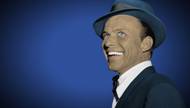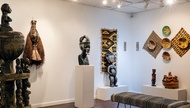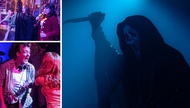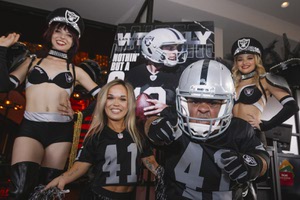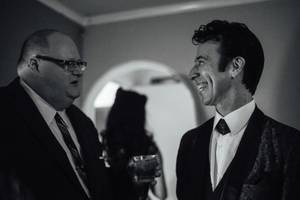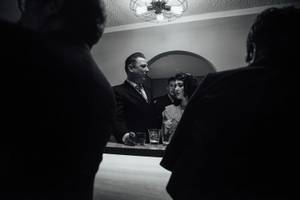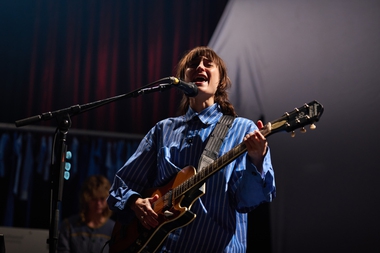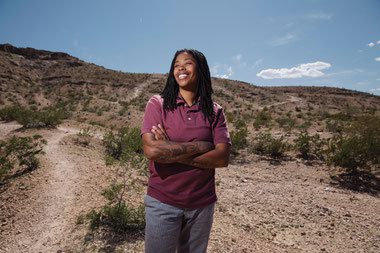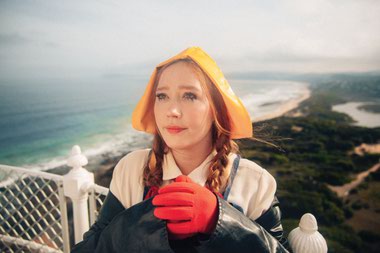The party is positively mid-century: women flaunt tailored, curve-loving dresses, men their crisp suits and pressed ties. Glasses clink and laughter floats above hazy music, setting the scene as wistful and romantic—a frame of American leisure frozen in time. This is the Church of Frank Sinatra, a modern-day social club that honors the 1950s and ’60s, when cell phones weren’t a distraction and people dressed like they gave a damn.
The church began in the late 1990s in San Francisco, and was brought to Las Vegas by “bishop” Donny Jacobs in 2012. The invitation-only chapter meets every six weeks to celebrate retro cocktail culture and music of the era—played on vinyl, naturally.
“I was tired of the mainstream and what comes with it,” says Jacobs, who DJs swing and lounge music under the name Lucky LaRue. “It lacks style. Music’s not what it used to be, fashion’s not what it used to be. We’re drawn to a better lifestyle.”
Jacobs was initiated nearly a decade ago during a rockabilly festival in San Francisco, and has since founded two chapters—one in his hometown of Houston, Texas, and now Las Vegas, a city almost synonymous with Sinatra, the captivating, blue-eyed entertainer who turned this dusty Western town into a glamorous desert destination. Sinatra’s ghost can be tracked through Valley casinos and restaurants, but here, in this dreamy, 1958 abode called Dr. Foemmel’s House of Cheer, his spirit is alive.
“Frank is more or less the iconic figure of all those performers that sang the American Songbook,” says founding member Eric Foemmel. “All of them are great—Bobby Darin, Sammy Davis Jr., Dean Martin, Louis Prima—but Sinatra was really considered the Chairman of the Board.”
From an imaginative perspective, the gloved women and hat-wearing men of Sinatra’s church might be housewives and secretaries, insurance brokers and ad men. Through a modern lens they’re far more diverse. “Everyone is from a totally different background,” member Vivian Martin says. “Everyone here comes from a different walk of life.” Among those in attendance is a Beatles tribute musician, a vintage shop owner, a dental hygienist, a doctor of physics, a graphic designer and a construction worker who adores vintage clothing. They dig the music, they admire the style and, as Martin observes: “We all like to have a drink.”
Martin, an artist and teacher who DJs and organizes Cinemondays at the Sci Fi Center, fell in love with retro culture through swing dancing. She comes from a long line of entertainers: Her grandmother, who performed at Folies Bergère in Paris, knew the Rat Pack casually and moved to the city in the 1950s to dance at the El Rancho. Her great grandmother, too, was a burlesque and vaudeville performer with Ziegfield Follies in New York, the first company to feature showgirls. But right there with the dancing is the clothing of the time.
“Nothing fits me that’s modern. Old stuff hugs me and fits me very well,” says Martin, adding that most of the retro scene is into thrifting. An oversized vintage dress for $9 can be fitted with $20 in tailoring and still beats buying new, she insists.
Sinatra 100
Between social gatherings showcasing their authentic garb, churchgoers might attend jazz or burlesque shows, or hone their wardrobes and record collections. Member P.J. Forbes collects tobacco pipes, his prize being a Meerschaum piece used by his great-great grandfather. Forbes, wearing a suit with pocket square, wingtip shoes and a hat with a feather, puffs on a wooden piece and discusses his latest tobacco blend with a friend.
Retro’s appeal is in its aesthetic, Foemmel says. “It’s pleasing to the eye.” And pleasure is a focus for this crowd, whether it’s historic fashion or music or just a good cocktail. Vintage Vegas is fading away at a rapid pace, but Sinatra’s congregants are here to keep it swinging.

